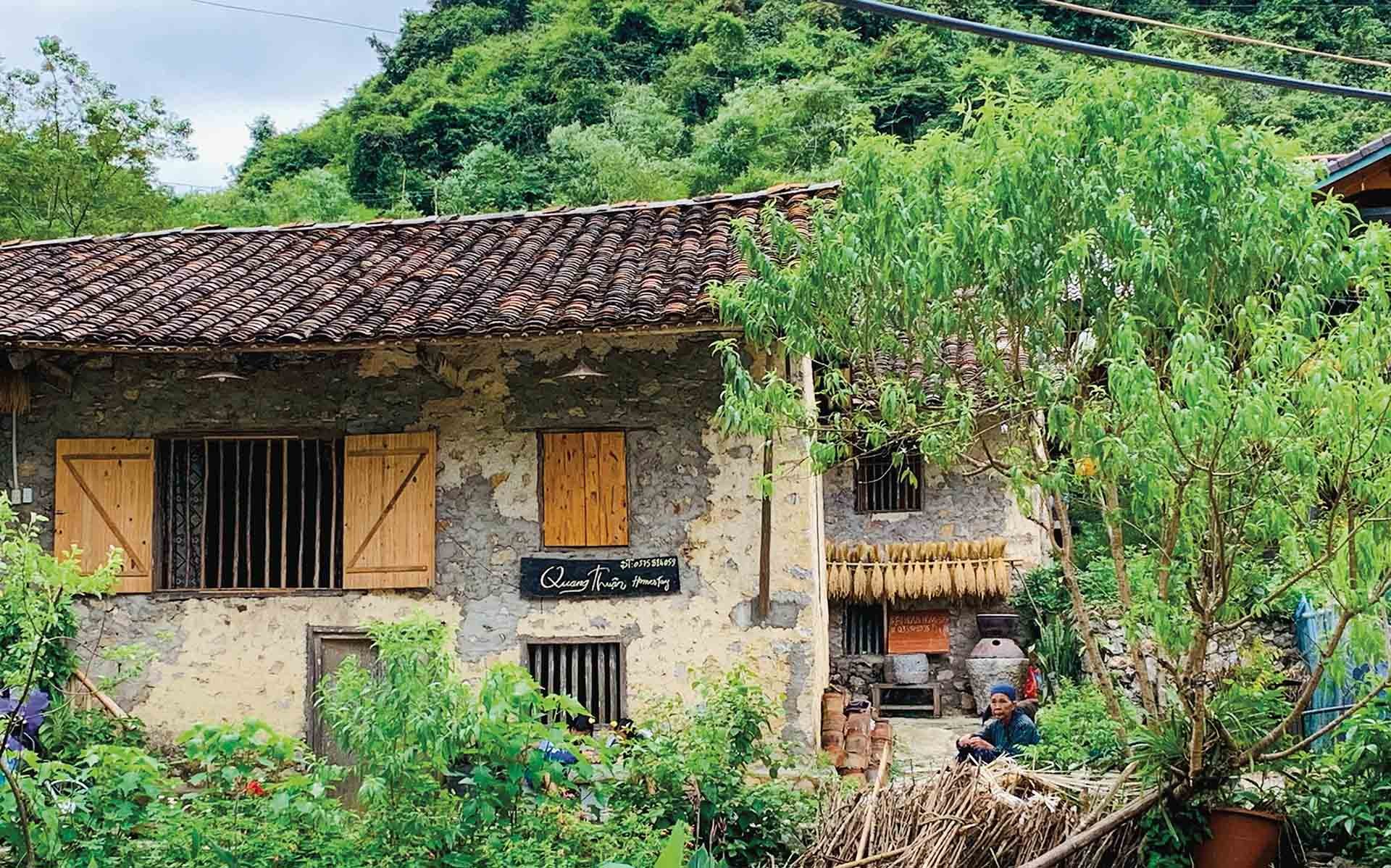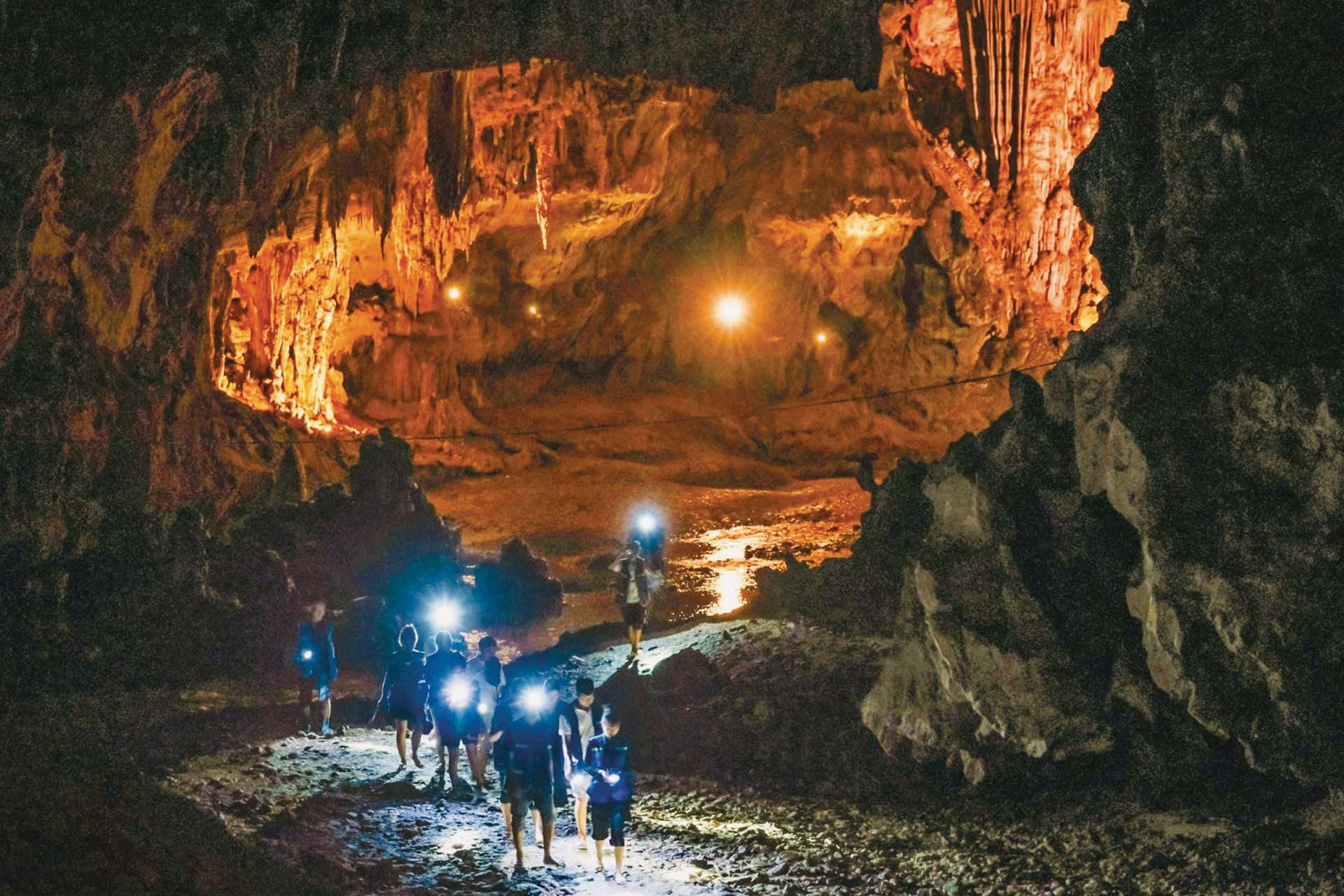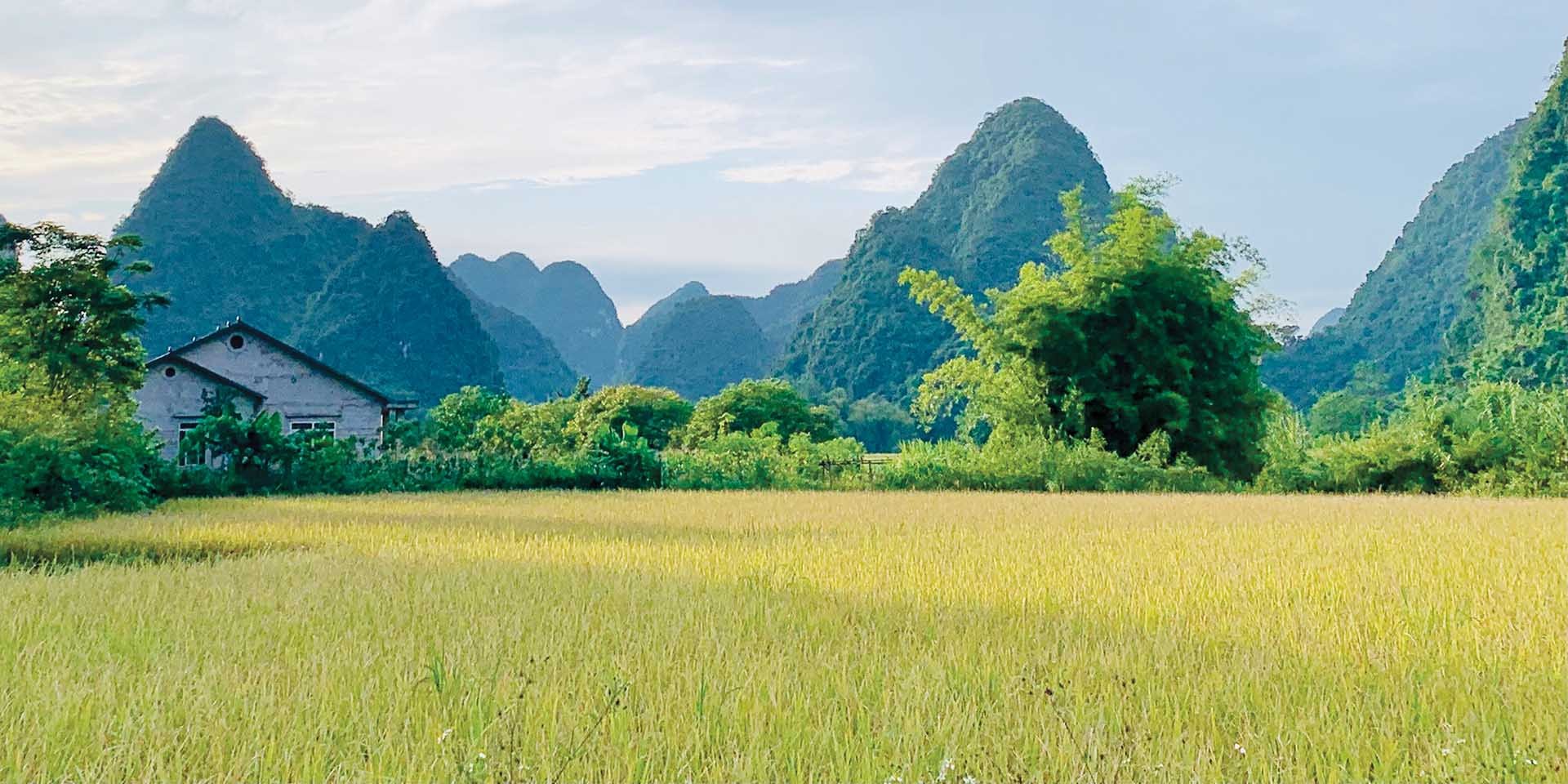
New discoveries to appreciate Cao Bang in every aspect
Latest
Returning to Cao Bang during the Ban Gioc falls tourist season, we chose to stay in Khuoi Ky stone village, which has been recognized by the Ministry of Culture, Sports, and Tourism as a “Typical traditional cultural village of ethnic minorities” since 2008.
The peaceful, lovely village of the Tay ethnic people located in an area of just about 1 hectare, leaning against the rocky mountain, facing a small stream, has opened a journey with fascinating discoveries.
 |
| Peaceful scene of Khuoi Ky ancient stone village (Photo: WVR/Ha Anh) |
Special ancient village
Khuoi Ky stone village has 14 houses with solid stone walls, designed with two roofs, with yin and yang tiles, clearly showing the uniqueness of the ethnic people here. Stone is also used in other constructions, including fences, stairs, mills and stoves, making each house sturdy like a fortress.
Not only attracted by the unique stone stilt house architecture, anyone who visits this more than 400-year-old village will also feel the cultural identity of the Tay people in Eastern Cao Bang with their customs and pure indigenous costumes.
Apart from maintaining a daily lifestyle of growing rice and corn, Khuoi Ky people are investing in the community tourism development, especially homestay accommodation and Tay cultural living experience model.
Tourism services attract a significant number of visitors, both domestic and international, bringing stable income and improving the people’s life quality.
Like Tay homestay we have stayed, each house here has air conditioning, hot and cold water dispenser, cooking area with gas stove, refrigerator, and some necessary appliances so guests can cook for themselves.
If staying for a long time, guests can follow the people here to participate in activities to experience the production and labor of the Tay people, such as picking bamboo shoots, digging tubers, working in the field, catching fish, or preparing typical dishes together, including smoked pork, grilled sausages, and clean vegetables grown at the edge of the forest.
 |
| Exploring Nguom Ngao cave (Photo: WVR/Ha Anh) |
Conquer “Tiger Cave” (Nguom Ngao cave)
Staying in Khuoi Ky village creates a favorable condition for us to visit Nguom Ngao - a cave of impressive beauty, hidden in a majestic mountain in Dam Thuy commune, Trung Khanh district.
In the Tay language, “nguom” means cave, while “ngao” means tiger. Together, Nguom Ngao stands for “Tiger Cave”. According to an oral legend, this cave used to be the natural habitat of a significant number of tigers. Additionally, the locals share a belief that the sound of the springs flowing within the cave resonates in a way that resembles the fierce roar of a tiger, combined with the wild nature beauty, further attracts our curiosity.
Previously, Nguom Ngao only operated on a sightseeing route within a range of about 1 kilometer, but now the Management Board has expanded new sightseeing routes to help visitors fully explore this mysterious cave.
Under the enthusiastic guidance of the tour guide, a native Tay girl, we chose a new tour route with a distance of up to 3 km. The deeper you go into the cave, the more overwhelmed you feel by a large space with corridors and stalactite systems of all shapes and sizes created by the magical hands of nature.
Ngom Ngao is divided into many areas, including the “four pillars of heaven”, with stone pillars that look like pillars of the sky, the central area with a majestic stalactite space and the treasure area with mountains of stalactites sparkling with gold and silver light.
Exploring the cave space, visitors encounter interesting images, such as cuscuta (dodder trees), breast milk, eagles, coral reefs, golden and silver waterfalls, and overturned lotus flowers.
Perhaps the most special thing about entering this magical maze is that each person can develop their own rich imagination. It is not necessary to follow the tour guide’s recommendations, anyone can freely and enjoy their own associations.
After a rain in the forest in Nguom Ngao, we ran into a swift-flowing stream in the cave and also large ponds that reflected stalactites on the water’s surface. After following “up hill and down dale” routes, there is the experience of rafting in the cave, admiring the crater and the cave entrance like Hang En cave in Son Doong, which is worthy for people who love to explore and experience.
 |
| Cao Bang landscape. (Photo: WVR/Ha Anh) |
Fragrances of Autumn in the border region
Coming to Cao Bang in October, we did not miss the opportunity to contemplate the special Autumn scenery of this full-ranged mountains-to-rivers highland.
That is Magic Eye mountain - the name given to a mountain located in Ban Danh valley, Quoc Toan commune, Tra Linh district, and is a popular check-in point.
This mountain is also known by another name, which is “Thung mountain” (known in Tay language as “Phja Piot”) since at the top there is a circular cave like the “eye” of the mountain with a diameter of more than 50 meters.
Magic Eye mountain is located in the heart of the valley between Thang Hen lake complex of Non Nuoc Cao Bang Geopark. Even though only visiting this place for a while, everyone can take in the majestic scenery of the mountain with a romantic steppe area next to the clear blue lake.
In addition to Magic Eye mountain, the beautiful landscape of Phong Nam - a place in Trung Khanh district is also one of the hunting spots for photographers every autumn.
Welcoming us before sunset, Phong Nam valley was covered in a bright yellow coat, standing out next to the rolling hills and mountains, and the Quay Son river was winding like a silk strip across the fields, bamboo groves, and people’s houses.
During the harvest season, this place shows a prosperous, peaceful countryside scene with bundles of fragrant sticky rice hanging on the front porch, straw plants neatly lined up on newly harvested fields.
Although it is a famous place, Phong Nam has not yet developed tourism services. The Vice Chairman of the commune said that the whole community only has one homestay house that mainly serves foreign tourists. The main income of the people here is still rice fields, corn fields, and fishing activities.
However, when tourists want to experience production work, Phong Nam people are hospitable and enthusiastic to guide. Locals revealed the secret when harvesting rice is they have to pick each rice spikelet, then dry it indoors so that the sticky rice retains its flavor and does not break as threshing rice by machine.
Another fascinating experience on the trip was that we went to the garden to harvest chestnuts with the locals.
In the vast chestnut orchards of Trung Khanh, people often use bamboo poles to hang branches and shake them to let the ripe fruit fall, or wait until the seeds are ripe enough to fall to the base and then people just need to collect them.
Ripe chestnuts have cracks in the outer shell, with one to three seeds inside. Since the bark has thorns, people bring the tree into the garden to pick the fruit and separate the seeds on the spot. When removing the outer prickly shell, there is dark brown chestnut, light white fluff layer, yellow kernel and having a delicious and nutty taste when eaten raw.
Together harvesting and enjoying chestnuts with the locals, we were also introduced to many other local specialties, including dishes made from chestnuts, such as chestnut cakes, sticky rice, green-rice chestnuts, and wine made from chestnuts.
After saying goodbye to Cao Bang, those warm flavors make me miss even more on a cold Autumn day.













